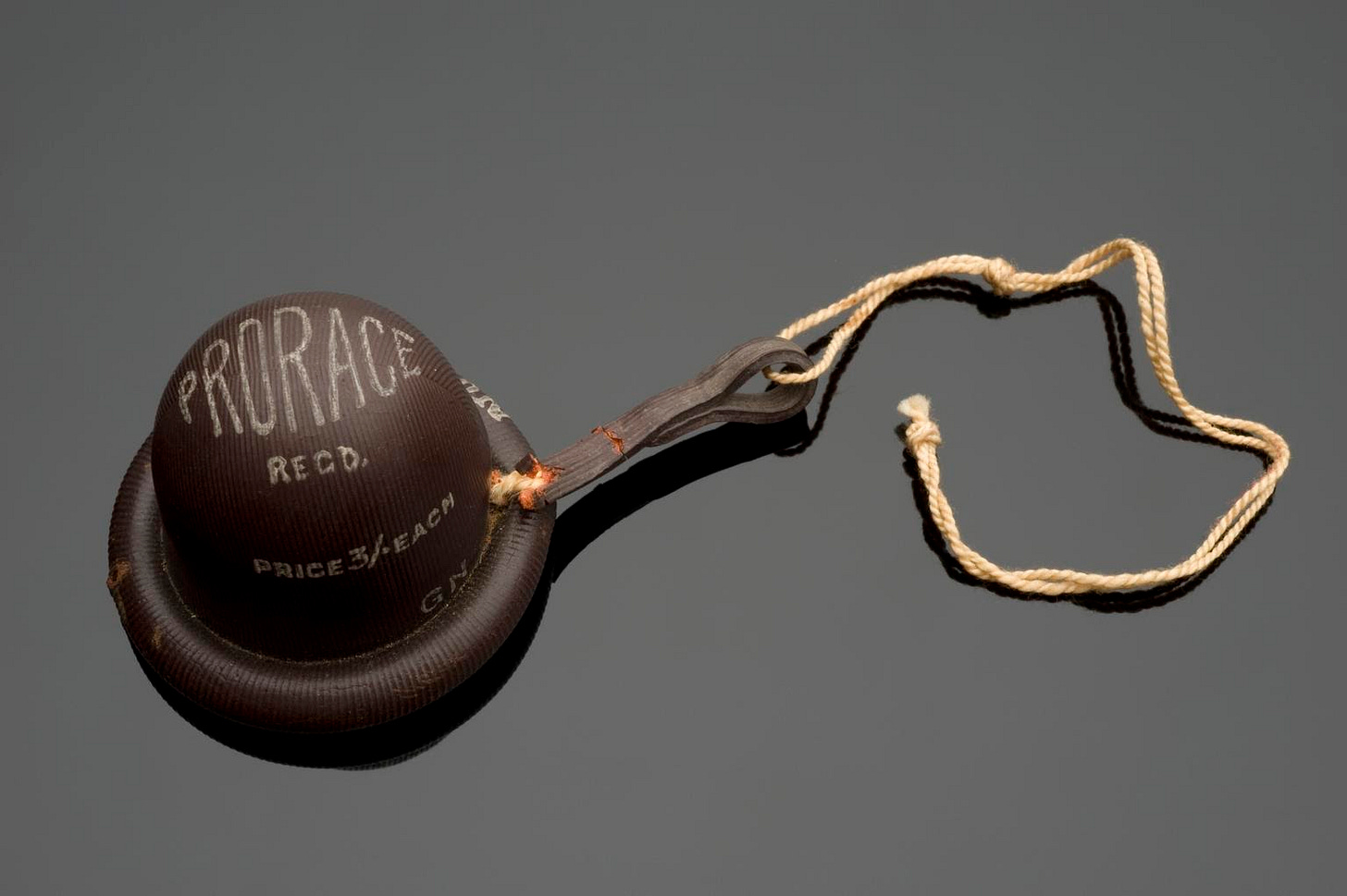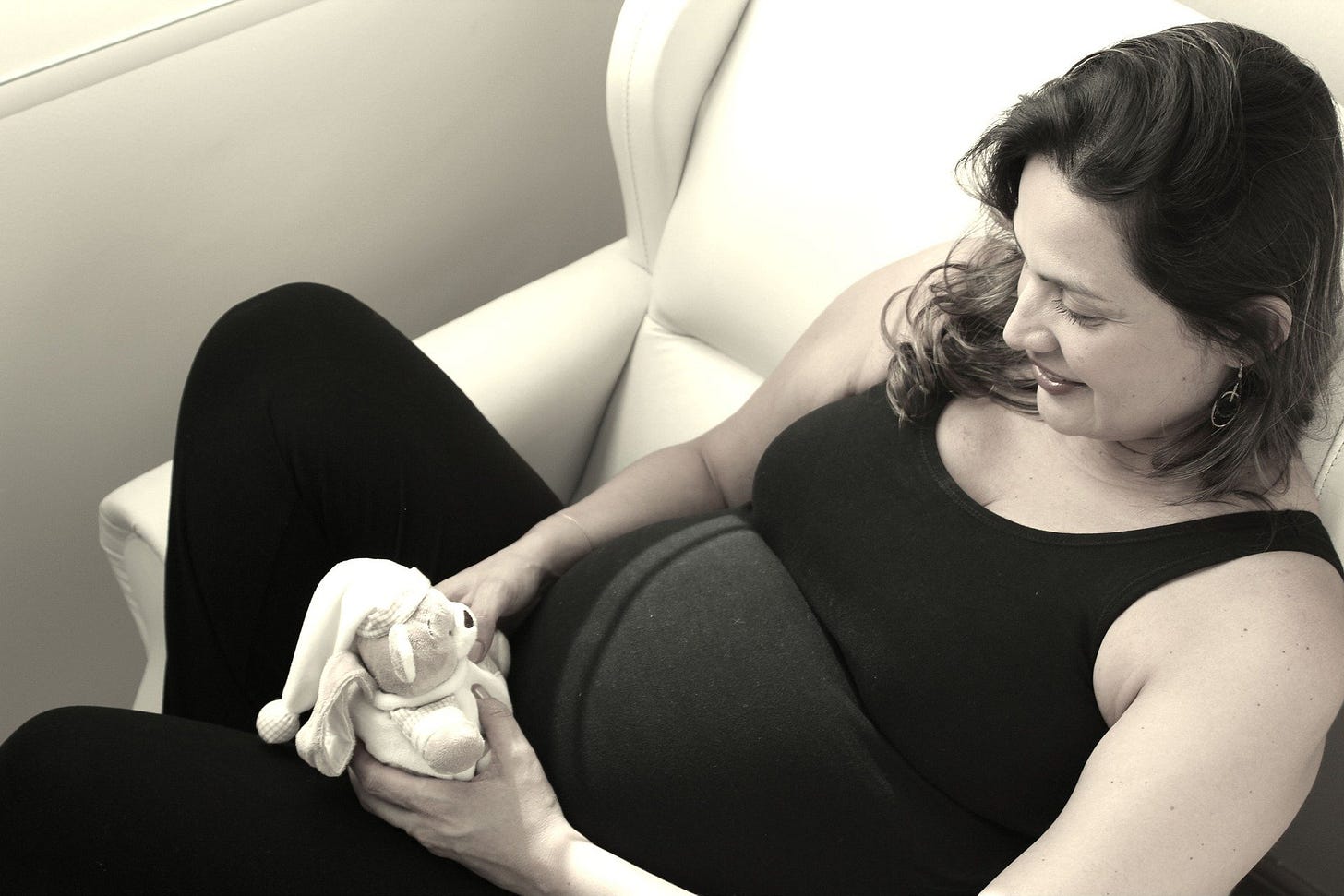Hello hags,
We love being a bit arsey, as you know. But sometimes even we recognise that you need to read something that doesn't make you want to throw yourself repeatedly out of a first-floor window, so this week we’re bringing you some good news from this “challenging” year.
The next 11 hours can't go quickly enough, frankly – but 2020 had a few bright spots for science and feminism. For one thing, the contraceptive pill celebrated 60 years of helping women take control of their fertility – more on that below. Plus, we’ve got a welcome U-turn on COVID-19 vaccinations for pregnant women, the Book Women of Kentucky, and a look at some bizarre early forms of contraception.
This was also the year that we discovered the existence of the delightfully named siphonophore – try saying that after your fourth NYE prosecco. It may sound like an exotic musical instrument or a bizarre plant, but it is in fact the world’s largest animal. Check out this wonderfully weird critter (from Australia, of course) and more fascinating 2020 science here. There’s also a photo of a sea turtle named Terry flipping the bird – showing that Mother Nature, at least, retains a sense of humour.
Sexual Anarchy: the Pill at 60
The oral contraceptive is celebrating the big 6-0 this year – it went on sale in the US in 1960 and reached the UK in 1961. Join us as we wish a happy birthday to the world’s most famous pill – and unearth some surprising facts about its development.
In the first year it became available, 400,000 US women saw their doctors about getting a prescription for Enovid-10, the original birth control pill. And no wonder, given that options pre-Pill were often inconvenient, ineffective, and/or reliant on male, er, cooperation. The Pill changed contraception – and society – forever. But how much do you know about the early life of this revolutionary drug? And why did some fear it would lead to “sexual anarchy”? Pop on Loretta Lynn’s classic ode to birth control, The Pill, and read the full article here...
TIT BITS
Keeping abreast of the latest news, views, and research
BREAKING: Pregnant and breastfeeding women still adults
An update on the use of the Pfizer/BioNTech COVID-19 vaccine – breastfeeding women can now receive it, along with pregnant women, if the potential benefits outweigh the risks. Thank goddess that common sense has prevailed. Treating pregnant and breastfeeding women as a “vulnerable” population who can’t receive crucial drugs and vaccines has a long and crappy history of leaving women in an untenable position – take a medication without knowing the risks (because nobody has bothered to study them), or face other health consequences (such as getting COVID-19). We’ve always held the (apparently controversial) belief that pregnant and breastfeeding women are adults who can make their own health decisions, including participation in clinical trials and taking new medications and vaccines – dare we hope that everyone else is finally catching up? Considering the gender (im)balance in front-line health and care work, women need the right to choose – how long do we need to keep saying that?!
A bit bloody creepy?!
Gone are the days of marking a little ‘P’ in your Filofax – it’s the era of the amazingly useful period app, and we’re big fans. But with usefulness comes a side serving of creepiness as they can unnecessarily store intimate information (from yeast infections to your pooing habits). Case in point, this study used app data to reveal that women have less sex at Christmas. Check out the goodies and the baddies of period apps in this Privacy International investigation.
Speed reading
One of the HEX team used to be a librarian (yep, we get sexier by the minute), so we loved this story about the Book Women. In the 1940s, this determined bunch did their bit to improve literacy by trekking 100–120 miles a week – mainly on horseback, but on foot if needed – to deliver reading material across Kentucky. Up hills, along creeks, come hail, snow or shine. As far as superhero names go, we’d take ‘Book Woman’ over ‘Bananaman’ every time.

HEX Education
A short history of birth control
As our very own Marie Fury celebrates the 60th anniversary of the contraceptive pill, let’s take a look at some of the options through history, from crocodile dung to stealing penises...

Ancient Egypt, 1580 and 1850 BC
According to super-old papyruses, options included honey, acacia leaves and lint to block sperm, a pessary made of crocodile dung, or the ol’ favourite of “pulling out”.
Ancient Greece and Rome
A whole load of plants and herbs were used by the Greeks and Romans, such as silphium, willow and myrrh. (Interestingly, Queen Anne’s lace used at this time is still used for contraception in some countries). Oh, and coitus interruptus, of course.
Ancient Islam
Cervix blocking with elephant dung, cabbage and/or pitch. More pulling out.
Medieval Europe
Despite living under the might of the Catholic Church, medieval women had some methods of birth control, including inserting herbs and other things into the vagina, wearing weasel testicles, and (horrifyingly) infanticide after birth.
Early modern England
As we head into the latter part of the 15th century, although contraception is still illegal, there are herbs and other pessaries, pulling out is still an old favourite and there was also a lambskin condom called a “venus glove” (although not commonly used). Interestingly, witches are deemed responsible for “birth control” by interfering with sexual relations betwixt man and wife. According to Malleus Maleficarum, a 1486 tome that is a *literal* guide to witch hunting, they performed infanticide and could steal men’s penises and keep them as pets.
The Victorian era to the early 1900s
Victorian women’s methods mostly centred on blocking (half a lemon = cervical cap), removing, or killing sperm (vinegar douche, anyone?). Women were still incredibly sexually repressed, but things started to change with the “scandalous” activist Dr Marie Stopes who helped make birth control more accessible to (married) women. Her campaigning for women was a huge deal. Shame she was an ardent eugenicist (we’ll leave that story for another day).
1950 onwards
Condoms are much more mainstream, contraception is becoming more accepted and the invention of the contraceptive pill liberates millions of women. Many options are available to women, but as we highlighted in a previous issue, contraceptive R&D has suffered a cycle of neglect and it’s time for a reboot (uteri utopia awaits!).

TO THE KRAKEN 🦑
So long, and thanks for all the shit
The time has finally come, ladies and gentlewitches. Between bushfires, police brutality, the ongoing pandemic and more, no matter where you are in the world this year can only be described as an absolute fucker. So with a sigh of relief, we are sending 2020 to the briny depths. How can a period of time be eaten without us all vanishing from existence, I hear you ask? Just rest assured that a cosmic horror such as Ms K isn’t bound by our own puny human notions of space and time
Additionally, we have been informed that the key workers, scientists, health workers and other absolute heroes who have worked so hard to get us all through this year are off to a tropical island for a well-earned break. Ms K will ferry them there herself, and promises to not so much as nibble anyone.
So long, 2020. You shall not be missed. We’re sticking up two tentacles in an offensive gesture – and keeping the rest crossed for a brighter year ahead.
More things keeping our pet penises alive this week:
This cheese and this cheese – just cheese in general tbh | Cooking tips from food scientists | Nigella Lawson deglazing a mansplainer | This thread on baby-holding techniques in The Mandalorian | The Slaves' Cheer up London music video – get your pompoms ready!
The HEX Science team
🧬Jean Splicer | ☢ Marie Fury | 🧠 Rorschach Tess | 🔬 Rosalind Frankly







